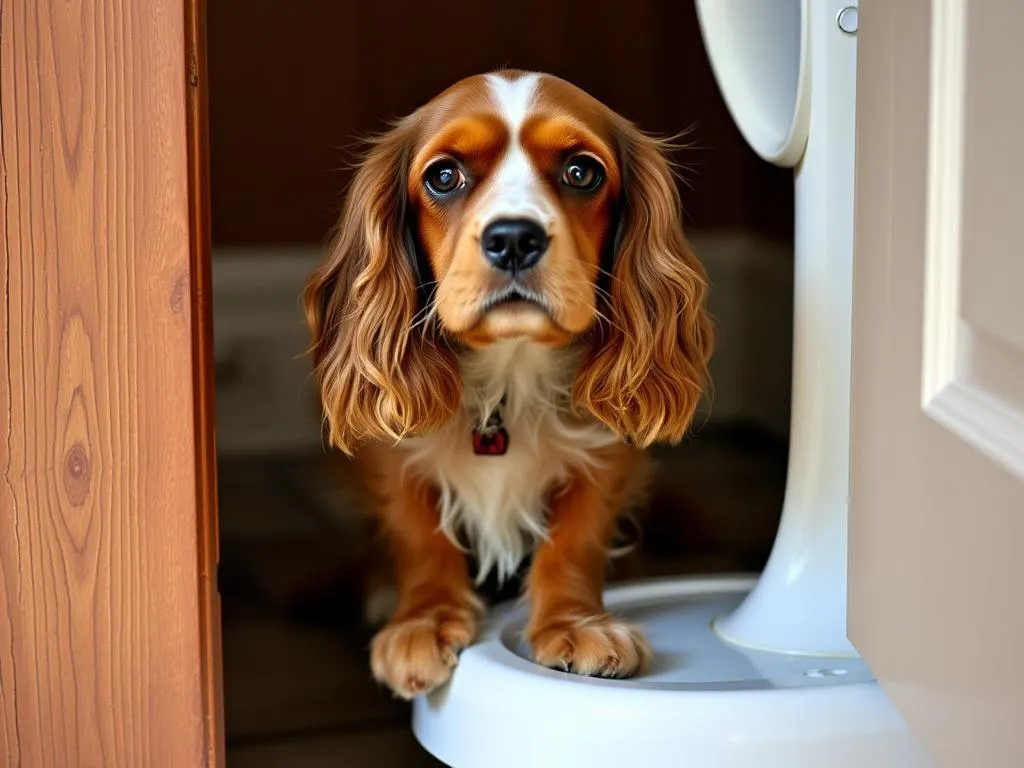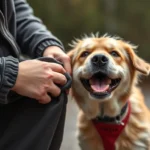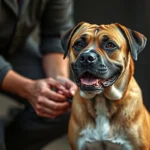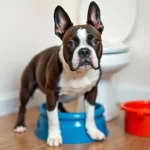
Introduction
Cocker Spaniels are beloved companions known for their affectionate nature and playful temperament. This breed thrives on companionship and is often eager to please their owners. However, to ensure a harmonious relationship, how to potty train a Cocker Spaniel is a crucial skill that every owner must master. Proper training not only helps in creating a clean environment but also fosters a sense of security and discipline in your dog.
Potty training has numerous benefits, both for the dog and the owner. A well-potty-trained dog is less likely to have accidents indoors, which leads to a cleaner home and a happier pet. However, many owners encounter common challenges during this process, such as accidents, stubbornness, or miscommunication. This article serves as a comprehensive guide to successfully potty train your Cocker Spaniel, addressing common questions and concerns along the way.
Understanding Cocker Spaniel Behavior
Cocker Spaniels are known for their unique behavioral traits. They are highly affectionate and thrive on human interaction, making them great family pets. Their intelligence and eagerness to please can be advantageous during training, but it can also lead to some challenges if not managed properly.
Typical Behavior Traits of Cocker Spaniels
- Affectionate Nature: Cocker Spaniels love to be around people and can become anxious if left alone for long periods.
- Intelligence and Eagerness to Please: This breed is quick to learn new commands and skills, making them relatively easy to train with the right approach.
Recognizing Signs That Your Dog Needs to Go
Understanding your Cocker Spaniel’s body language is critical in potty training. Look for signs that indicate your dog needs to relieve itself:
- Body Language Cues: Common indicators include circling, sniffing the ground, or pacing.
- Vocalizations or Behavior Changes: Whining, barking, or scratching at the door may signal your dog’s need to go outside.
Preparing for Potty Training
Before diving into the training process, it’s essential to prepare your home and establish a routine.
Setting Up a Designated Potty Area
Choosing a specific outdoor area for your Cocker Spaniel to relieve itself can greatly enhance training effectiveness. Consistency is key, so always take your dog to the same spot.
- Importance of Consistency: A familiar location will help your dog associate that area with potty time.
- Tips for Choosing the Right Outdoor Space: Select a location that is easily accessible and away from distractions, such as other animals or bustling areas.
Gathering Necessary Supplies
Having the right supplies on hand can make the potty training process smoother:
- Leash and Collar: These are essential for guiding your dog to the potty area.
- Potty Training Pads: Useful for indoor training during bad weather or if you’re away.
- Cleaning Supplies: Accidents happen, so ensure you have enzymatic cleaners to eliminate odors effectively.
Establishing a Routine
Creating a consistent schedule is one of the most effective strategies in potty training.
- Importance of a Consistent Schedule: Regular feeding times lead to regular potty times, making it easier for your dog to establish a routine.
- Feeding Times and Their Impact on Potty Needs: Aim to feed your Cocker Spaniel at the same times each day to predict when they will need to go outside.
Step-by-Step Guide to Potty Training a Cocker Spaniel
Establish a Routine
Establishing a feeding and potty schedule is the first step in the potty training process.
- Importance of Feeding and Potty Schedule: By providing meals at the same time every day, you can predict when your dog will need to go out.
- How to Use a Timer for Regular Potty Breaks: Set a timer for every 1-2 hours to remind yourself to take your dog outside, especially after meals, playtime, and naps.
Choose a Command
Selecting a specific word or phrase for potty time can help reinforce the habit.
- Selecting a Word or Phrase: Common commands include “go potty” or “do your business.” Choose one that feels natural to you.
- Importance of Consistency in Verbal Cues: Always use the same command to avoid confusing your dog.
Supervise and Observe
Keeping a close eye on your Cocker Spaniel during the training process is essential.
- Keeping a Close Eye on Your Dog: Supervise your pet indoors to catch any signs that they need to go out.
- How to Identify Pre-Potty Behaviors: Look for cues such as sniffing around, whining, or heading toward the door.
Reward and Reinforce
Positive reinforcement plays a significant role in successful potty training.
- Positive Reinforcement Techniques: Use treats, praise, or playtime immediately after your dog goes potty outside.
- Timing of Rewards to Strengthen Learning: Always reward your dog immediately after they relieve themselves outside to reinforce the behavior.
Handling Accidents
Accidents are a normal part of the potty training process; how you handle them can affect your dog’s learning.
- Common Setbacks During Potty Training: Factors such as stress, changes in routine, or health issues can lead to accidents.
- How to Properly Clean Accidents: Use enzymatic cleaners to thoroughly eliminate odors that might cause your dog to return to the same spot.
- Importance of Remaining Calm and Not Punishing: Never punish your dog for accidents, as this can create fear and anxiety around potty time.
Gradually Increase Freedom
As your Cocker Spaniel becomes more reliable with potty training, you can gradually give them more freedom.
- How to Transition from Confined Space to More Freedom: Start by allowing your dog access to a larger area of the house while continuing to supervise.
- Monitoring Progress and Adjusting the Routine: Keep an eye on your dog’s behavior to identify any setbacks or areas needing reinforcement.
Troubleshooting Common Potty Training Issues
Even with the best intentions, setbacks can occur during the potty training process.
Reasons for Regression in Potty Training
If you notice your Cocker Spaniel regressing in their potty behavior, consider potential causes:
- Stress or Changes in Environment: New pets, moving homes, or changes in routine can trigger anxiety.
- Health Issues: If your dog is suddenly having accidents, consult a veterinarian to rule out any medical problems.
Addressing Stubbornness and Refusal to Go Outside
Some dogs may be hesitant to go outside for various reasons.
- Identifying Potential Causes: Fear of loud noises or unfamiliar environments can play a role.
- Gradual Exposure: Slowly acclimate your dog to the outdoors by spending more time outside and rewarding them for positive interactions with the environment.
When to Seek Professional Help
If you find yourself struggling with potty training, it might be time to consult a professional trainer or behaviorist.
- Signs You May Need Help: If your Cocker Spaniel is consistently having accidents despite your best efforts, or if they exhibit signs of extreme anxiety, professional guidance can be beneficial.
Tips for Successful Potty Training
In addition to following the steps outlined above, consider these additional tips for improving your potty training success.
Utilizing Crate Training as a Helpful Tool
Crate training can be an effective method for potty training your Cocker Spaniel.
- Benefits of Crate Training: Dogs naturally avoid soiling their sleeping area, making crates a valuable tool for teaching them bladder control.
- How to Introduce the Crate: Ensure the crate is a comfortable and safe space, and never use it as punishment.
Importance of Patience and Consistency
Potty training takes time and patience.
- Staying Consistent: Stick to your routine and commands, and don’t get discouraged by setbacks.
- Understanding That Every Dog is Different: Some Cocker Spaniels may take longer to train than others.
Tips for Rainy or Cold Weather Potty Training
Weather can impact your dog’s willingness to go outside, so be prepared.
- Using Potty Pads Indoors: During inclement weather, consider using potty pads as a temporary solution.
- Encouraging Outdoor Potty Time: Equip your dog with a raincoat or booties to make them more comfortable when going outside.
Conclusion
Successfully learning how to potty train a Cocker Spaniel involves understanding your dog’s behavior, establishing a consistent routine, and utilizing positive reinforcement. By following the steps outlined in this guide, you can create a positive potty training experience for both you and your pet. Remember to be patient and consistent, and enjoy the process as you strengthen your bond with your Cocker Spaniel through training. A well-trained dog is not only a pleasure to have but also contributes to a happy home environment.
FAQs
Common Questions About Potty Training Cocker Spaniels
- How long does it take to potty train a Cocker Spaniel?
-
The duration can vary, but with consistent training, many dogs can be reliably trained within a few weeks to a few months.
-
What should I do if my Cocker Spaniel has frequent accidents?
-
Review your training routine, ensure you’re providing enough potty breaks, and consult a veterinarian if the problem persists.
-
Can I use pee pads instead of outdoor training?
-
Yes, pee pads can be useful for indoor training, but it’s essential to transition to outdoor potty breaks as your dog learns.
-
Is it normal for my Cocker Spaniel to regress sometimes?
-
Yes, some regression is normal, especially during stressful situations or changes in the environment. Remain patient and reinforce training.
-
Should I punish my Cocker Spaniel for accidents?
- No, punishment can create fear and anxiety. Instead, focus on positive reinforcement when your dog goes potty in the right place.









